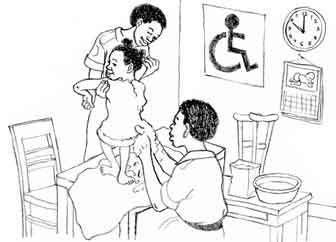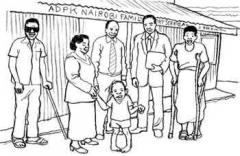Your progress
0%
complete

Successful rehabilitation involves more sectors than health: it also requires the involvement of sectors such as education, livelihood and social welfare.
This element focuses on measures to improve functioning that are offered within the health sector. It is important to note, however, that health-related rehabilitation services and the provision of assistive devices are not necessarily managed by the ministry of health (see Rehabilitation services).
Learn about the service provided by an Indian woman who lost her sight.


The Association for the Physically Disabled of Kenya (APDK) has been providing comprehensive rehabilitation services in Kenya for the past 50 years, reaching over 500,000 people with disabilities. As a result of several partnerships, APDK has been able to establish a national rehabilitation network consisting of nine main branches, 280 associated outreach centres and many community-based rehabilitation programmes. These provide services such as therapy, assistive devices and support for surgical interventions.
One of APDK’s successful partnerships has been with the Ministry of Medical Services. Over the past 30 years, APDK has worked closely with this Ministry to ensure that quality rehabilitation services are accessible to as many people as possible. Six of the nine APDK branches are located within government hospitals and the Ministry has provided over 50 health workers (mostly therapists and technicians) to work in these branches. The Ministry provides the salary for most of these health workers while APDK funds the programme costs.
APDK established their first CBR in their Mombasa branch in 1992. Since 2000, they have extended these programmes to the major slums in Nairobi in order to reach those people with disabilities who are most vulnerable. CBR provide home-based rehabilitation and are an important referral link to APDK outreach centres and branches. With financial support from CBM and Kindernothilfe, APDK has employed 32 CBR personnel to work in these programmes while the government has funded several therapy positions.
APDK is a successful example of a public–private partnership and demonstrates how centre-based rehabilitation and community-based rehabilitation can work together to provide rehabilitation services for people living in both urban and rural areas. In 2008 alone, approximately 52,000 Kenyan people received rehabilitation services from APDK.